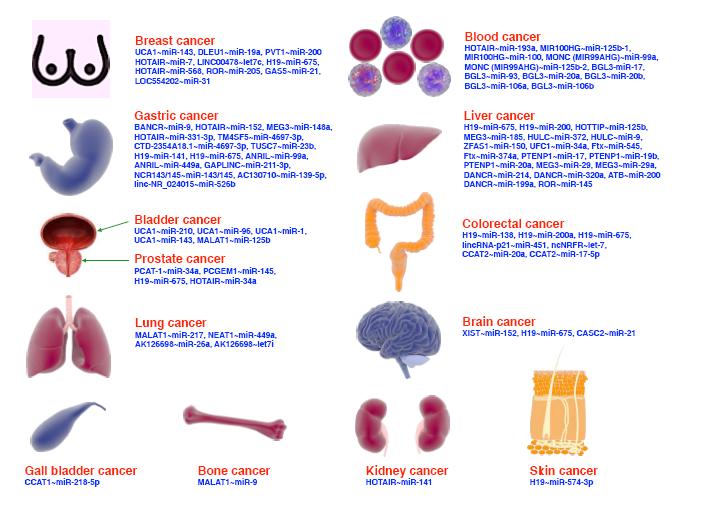| 1. |
Qu Y, Yang Y, Sun X, et al. Heart rate variability in patients with spontaneous intracerebral hemorrhage and its relationship with clinical outcomes. Neurocrit Care, 2024, 40(1): 282-291.
|
| 2. |
Kahan J, Ong H, Ch’ang J, et al. Comparing hematoma characteristics in primary intracerebral hemorrhage versus intracerebral hemorrhage caused by structural vascular lesions. J Clin Neurosci, 2022, 99: 5-9.
|
| 3. |
Pantoni L. Cerebral small vessel disease: from pathogenesis and clinical characteristics to therapeutic challenges. Lancet Neurol, 2010, 9(7): 689-701.
|
| 4. |
Boulouis G, van Etten ES, Charidimou A, et al. Association of key magnetic resonance imaging markers of cerebral small vessel disease with hematoma volume and expansion in patients with lobar and deep intracerebral hemorrhage. JAMA Neurol, 2016, 73(12): 1440-1447.
|
| 5. |
Suo Y, Chen W, Pan Y, et al. Magnetic resonance imaging markers of cerebral small vessel disease in hematoma expansion of intracerebral hemorrhage. J Stroke Cerebrovasc Dis, 2018, 27(7): 2006-2013.
|
| 6. |
Davis SM, Broderick J, Hennerici M, et al. Hematoma growth is a determinant of mortality and poor outcome after intracerebral hemorrhage. Neurology, 2006, 66(8): 1175-1181.
|
| 7. |
Rodriguez-Luna D, Rubiera M, Ribo M, et al. Serum low-density lipoprotein cholesterol level predicts hematoma growth and clinical outcome after acute intracerebral hemorrhage. Stroke, 2011, 42(9): 2447-2452.
|
| 8. |
Li Q, Liu QJ, Yang WS, et al. Island sign: an imaging predictor for early hematoma expansion and poor outcome in patients with intracerebral hemorrhage. Stroke, 2017, 48(11): 3019-3025.
|
| 9. |
Li Q, Zhang G, Huang YJ, et al. Blend sign on computed tomography: novel and reliable predictor for early hematoma growth in patients with intracerebral hemorrhage. Stroke, 2015, 46(8): 2119-2123.
|
| 10. |
Li Q, Zhang G, Xiong X, et al. Black hole sign: novel imaging marker that predicts hematoma growth in patients with intracerebral hemorrhage. Stroke, 2016, 47(7): 1777-1781.
|
| 11. |
Serrano E, López-Rueda A, Moreno J, et al. The new Hematoma Maturity Score is highly associated with poor clinical outcome in spontaneous intracerebral hemorrhage. Eur Radiol, 2022, 32(1): 290-299.
|
| 12. |
中华医学会神经病学分会, 中华医学会神经病学分会脑血管病学组. 中国脑出血诊治指南(2019). 中华神经科杂志, 2019, 52(12): 994-1005.
|
| 13. |
Zhang S, Wang Z, Liu P, et al. Development of cognition decline in non-acute symptomatic patients with cerebral small vessel disease: non-acute symptomatic cerebral ischemia registration study (NASCIR)-rationale and protocol for a prospective multicentre observational study. BMJ Open, 2022, 12(2): e050294.
|
| 14. |
Yu N, Yu H, Li H, et al. A robust deep learning segmentation method for hematoma volumetric detection in intracerebral hemorrhage. Stroke, 2022, 53(1): 167-176.
|
| 15. |
LoPresti MA, Bruce SS, Camacho E, et al. Hematoma volume as the major determinant of outcomes after intracerebral hemorrhage. J Neurol Sci, 2014, 345(1/2): 3-7.
|
| 16. |
Rodrigues MA, Samarasekera N, Lerpiniere C, et al. The Edinburgh CT and genetic diagnostic criteria for lobar intracerebral haemorrhage associated with cerebral amyloid angiopathy: model development and diagnostic test accuracy study. Lancet Neurol, 2018, 17(3): 232-240.
|
| 17. |
Wardlaw JM, Smith EE, Biessels GJ, et al. Neuroimaging standards for research into small vessel disease and its contribution to ageing and neurodegeneration. Lancet Neurol, 2013, 12(8): 822-838.
|
| 18. |
Andere A, Jindal G, Molino J, et al. Volumetric white matter hyperintensity ranges correspond to fazekas scores on brain MRI. J Stroke Cerebrovasc Dis, 2022, 31(4): 106333.
|
| 19. |
Fazekas F, Chawluk JB, Alavi A, et al. MR signal abnormalities at 1. 5 T in Alzheimer’s dementia and normal aging. AJR Am J Roentgenol, 1987, 149(2): 351-356.
|
| 20. |
Staals J, Makin SD, Doubal FN, et al. Stroke subtype, vascular risk factors, and total MRI brain small-vessel disease burden. Neurology, 2014, 83(14): 1228-1234.
|
| 21. |
Pasi M, Sugita L, Xiong L, et al. Association of cerebral small vessel disease and cognitive decline after intracerebral hemorrhage. Neurology, 2021, 96(2): e182-e192.
|
| 22. |
Fujii Y, Takeuchi S, Sasaki O, et al. Multivariate analysis of predictors of hematoma enlargement in spontaneous intracerebral hemorrhage. Stroke, 1998, 29(6): 1160-1166.
|
| 23. |
Li Z, You M, Long C, et al. Hematoma expansion in intracerebral hemorrhage: an update on prediction and treatment. Front Neurol, 2020, 11: 702.
|
| 24. |
Chen CH, Chen SF, Tsai HH, et al. Associations of cerebral small vessel disease on the features of hematoma and hematoma expansion in intracerebral hemorrhage. Cerebrovasc Dis, 2024, 53(2): 136-143.
|
| 25. |
Wang ZJ, Zhao R, Hu X, et al. Higher cerebral small vessel disease burden in patients with small intracerebral hemorrhage. Front Neurosci, 2022, 16: 888198.
|
| 26. |
Xu M, Cheng Y, Zhang S, et al. Higher cerebral small vessel disease burden is associated with smaller hematoma volume in mixed-location intracerebral hemorrhage. Microcirculation, 2021, 28(6): e12705.
|
| 27. |
Delcourt C, Zhang S, Arima H, et al. Significance of hematoma shape and density in intracerebral hemorrhage: the intensive blood pressure reduction in acute intracerebral hemorrhage trial study. Stroke, 2016, 47(5): 1227-1232.
|
| 28. |
Barras CD, Tress BM, Christensen S, et al. Density and shape as CT predictors of intracerebral hemorrhage growth. Stroke, 2009, 40(4): 1325-1331.
|
| 29. |
Yang J, Arima H, Wu G, et al. Prognostic significance of perihematomal edema in acute intracerebral hemorrhage: pooled analysis from the intensive blood pressure reduction in acute cerebral hemorrhage trial studies. Stroke, 2015, 46(4): 1009-1013.
|
| 30. |
Magid-Bernstein JR, Li Y, Cho SM, et al. Cerebral Microbleeds and Acute Hematoma Characteristics in the ATACH-2 and MISTIE Ⅲ Trials. Neurology, 2022, 98(10): e1013-e1020.
|
| 31. |
Knottnerus IL, Winckers K, Ten Cate H, et al. Levels of heparin-releasable TFPI are increased in first-ever lacunar stroke patients. Neurology, 2012, 78(7): 493-498.
|




